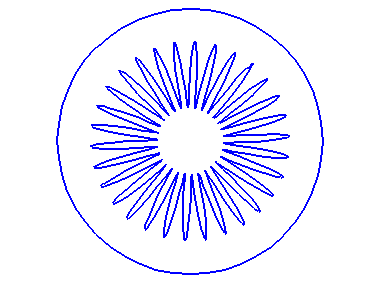
Comments
The dependency FC(M): The assumed rate of increase of the volume fraction of the material C with the increase of the mass M of the obtained structure, is linear:
FC(M) = 0 if M < FN *f1, FC(M) = 1 if M > 1- f2* FC, FC(M) = FN *f1 + M ( ) Alternatively, one may use the scheme of effective medium theory. In this approach, one solves the problem for the "coated circles" geometry by separation of variables. The results coincide?